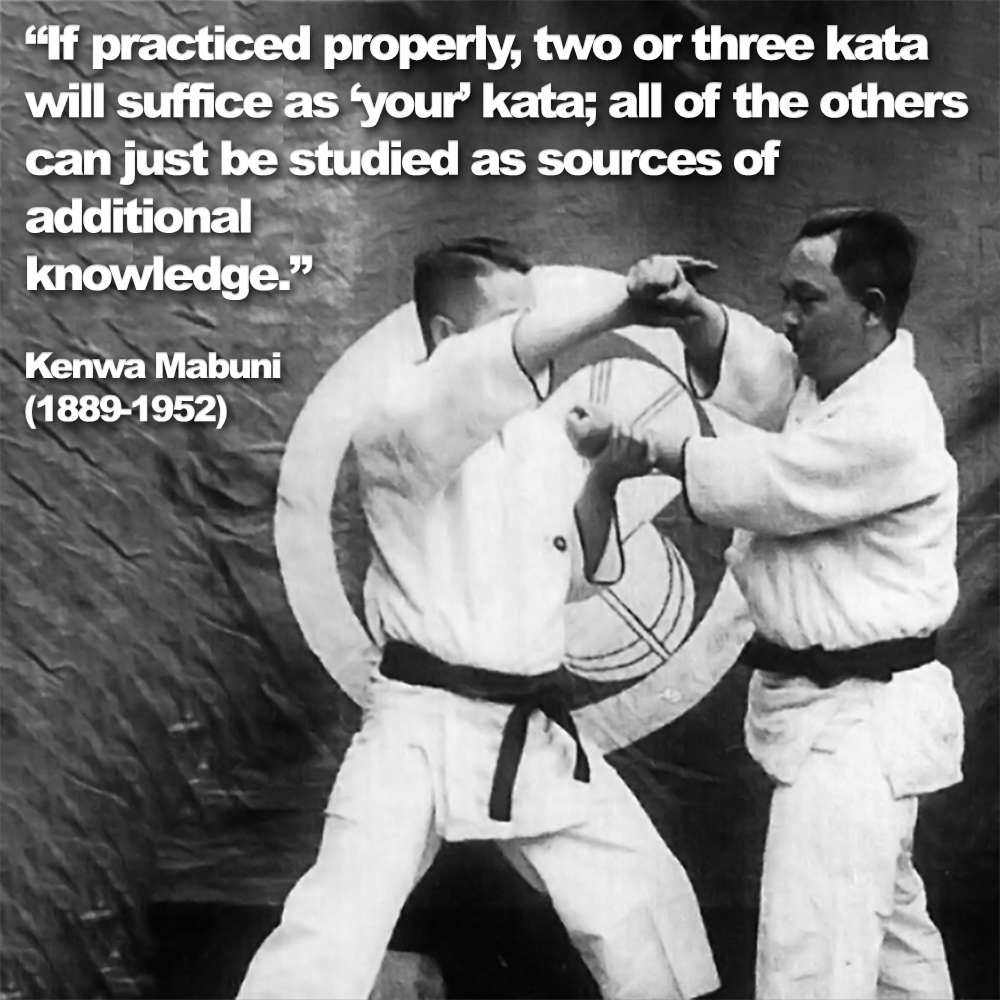
(2 minute 10 second read)
How many kata are enough?
.
Over the years I have collected probably way too many, and although I have a core that I teach deeply, many of them are probably redundant, or at least very similar to each other.
.
What I find most interesting about kata is how many practitioners tend to view kata as a singular thing, a performance, many coming to the conclusion that more kata equals more knowledge, more techniques and more ways to fight.
.
However, when you break down the kata into movements and drills, you should begin to realize that you actually don’t fight with the kata as a whole.
.
The answer of course to “how many?”, hinges on your goals.
.
If your interest is in a more pragmatic approach, then a few kata, meticulously practiced and understood, can equip you with all the necessary movements and techniques you need. But a really deep understanding, both mechanical and practical, is key.
.
If competition or preserving tradition fires your spirit, a broader exploration of kata might be your path. Perhaps this will offer you a wider range for personalization, not necessarily in technique variety, but in finding a kata you can truly make your own.
.
Many see kata as a solitary exercise, a solo performance. But remember, context is crucial. So before diving into a sea of kata, ask yourself “for what purpose?”
.
If you want to practice your kata with a more realistic flavor in mind, then two or three kata understood on a deep level, can provide a wealth of principles and techniques.
.
Kenwa Mabuni is often quoted as saying; ‘If practiced properly, two or three kata will suffice as “your” kata; all of the others can just be studied as sources of additional knowledge. – Breadth, no matter how great, means little without depth.’
.
Of course practicing the skills within the kata needs to be studied in depth, relentlessly and pressure tested, as they will be useless to you if you don’t practice them enough.
.
On the other hand, more kata can offer students more options to personalize and explore variations beyond your core curriculum.
.
Traditionally, each kata held immense knowledge. Today, with some styles boasting numerous kata, achieving a true understanding of their applications becomes increasingly difficult. The emphasis often shifts from comprehending postures and movements to simply memorizing it.
.
And by focusing on the pattern only, for some people, means that the pattern becomes the ‘thing’ they are studying, instead of the principles and concepts of why things work the way they do, in the context it’s applied.
.
From a practical perspective, this volume makes in-depth study nearly impossible. Only a handful of kata are truly necessary for pragmatic purposes, but they require deep study to unlock their meanings.
.
Ultimately, the “how many kata are enough?” question is subjective, and of course specific to your style of karate and the group you belong to.
.
Even if your curriculum has a high number of kata within it, choose a few, delve deep, and appreciate the knowledge they hold. This is the true legacy entrusted to us.
.
